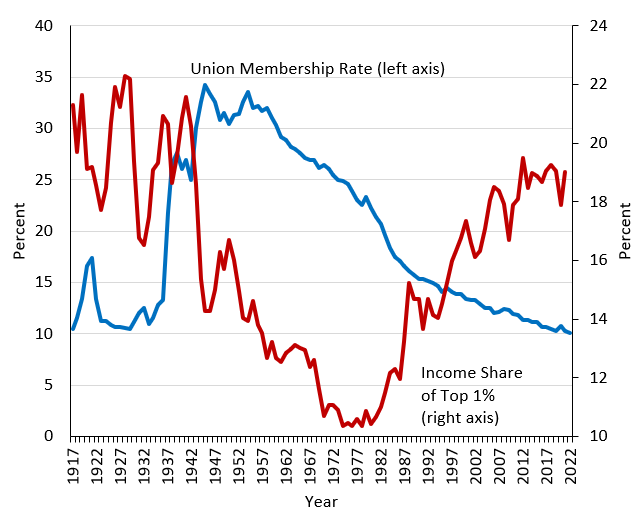Biden’s Misguided Move: Politics Over Public Interest in Federal Rail Policy
This month, talks emerged in the courts concerning an issue from the Biden administration which seemingly illustrates the distorted influence of organized labor and political tampering in an agency that ought to be steered by impartial data rather than political interests. The debated regulation, which was established under Biden’s watch by the Federal Railroad Administration (FRA), is the arbitrary requirement of employing at least two crew members for the majority of freight trains.
Such a trivial rule appears to hold no genuine purpose for ensuring safety. It’s rather puzzling that Biden’s team chose to cite the 2023 derailment incident in East Palestine, Ohio as justification for this ruling, even though the train involved in the incident was already being manned by three crew members, exceeding the rule’s requirement. Futhermore, the FRA admitted that quantifying any safety benefits from this rule proved to be an elusive task.
Instead of enhancing safety, historical reference and concrete evidence suggest that it is actually investment and technological advancements, rather than archaic staffing mandates, that have substantially improved safety measures. The notable decrease in rail accidents since the 1980’s deregulation essentially corroborates this perspective.
The implications of this rule extend beyond mere safety concerns. Patrick McLaughlin, a former economist with the FRA, recently submitted a cautionary statement to the Department of Transportation (DOT) highlighting that such excessive railway regulations can impede innovation, impose exorbitant costs on shippers and undesirably raise prices in low-income communities.
McLaughlin further discloses that these types of regulations can result in distorted safety outcomes, by negatively impacting the financial health of railroads and deterring the adoption of cutting-edge technologies that enhance risk management and efficiency. Alarmingly, a host of experts and organizations have echoed McLaughlin’s sentiments and urged DOT to dispense with the redundant crew-size ruling.
Despite how it might be dressed up, the rule is nothing more than an illustration of top-down, politically-driven mandates that fail to contribute positively in any meaningful way. Instead, they insist on archaic staffing models which merely divert more freight to trucks – a move that brings with it a surge in traffic congestion and pollution as well as an increase in road casualties.
In essence, this arbitrary rule only serves to weaken voluntary labor-management agreements that have effectively and flexibly been managing crew sizes for years. The Center for Transportation Advancement added its voice to the growing chorus of disapproval, arguing that rigid staffing mandates undermine productive negotiations and bizarrely mimic defunct laws from the early 20th century.
Such laws, already seen as historical artifacts, were rightly abrogated due to the realization that they served the interests of unions over public safety. Subsequently, the pushback against this type of mandate presents an opportunity to reignite the push for innovation and actual safety improvement. Far from safeguarding workers, the rule appears to be more geared towards bolstering a political machine.
This rule from the Biden administration implicitly suggests an inclination towards politics over public interest. It seems to prioritize preserving outdated regulations and siding with special interests instead of engendering modernization and competition in the railroad industry.
The entire debacle surrounding this rule emphasizes the need for a complete overhaul of the existing railway regulations. A more performance-oriented approach to regulation is likely to prove beneficial, paving the way for genuine safety enhancements and efficiency gains.
Ironically, this regulation, far from conferring any safety advantage, does mean certain harm to the economic and operational performance of railroads. By encumbering them with cumbersome conditions, one can perceive the chilling effects on potentially transformative innovations.
This fuels an unhealthy cycle where railroads face shrinking financial margins while their flexibility is curbed by rigid rules. Moreover, it does little to incentivize the adoption of beneficial technological improvements that would mitigate risks and promote operational efficiency.
Undeniably, the problem lies in the deep-seated political motivations backing these directives. As such, the biggest challenge will be to sever the ties that bind regulation and politics, creating room for sensibly guided governance in the public interest.
While it doesn’t take an expert to point out the flaws in this outdated model, the vehement opposition from a ‘Who’s Who’ of industry professionals delivers a sobering critique. It should prompt a thorough re-evaluation of current practices and provoke a move towards policies that reflect modern realities.
Ultimately, the call to action is clear: legacy restrictions are outmoded. Adhering to them may provide short-term political mileage, but the long-term societal cost is disproportionately high. Striking a balance between regulatory control and operational freedom will usher in a new age for the rail industry, one defined by competition, innovation, and safety.



